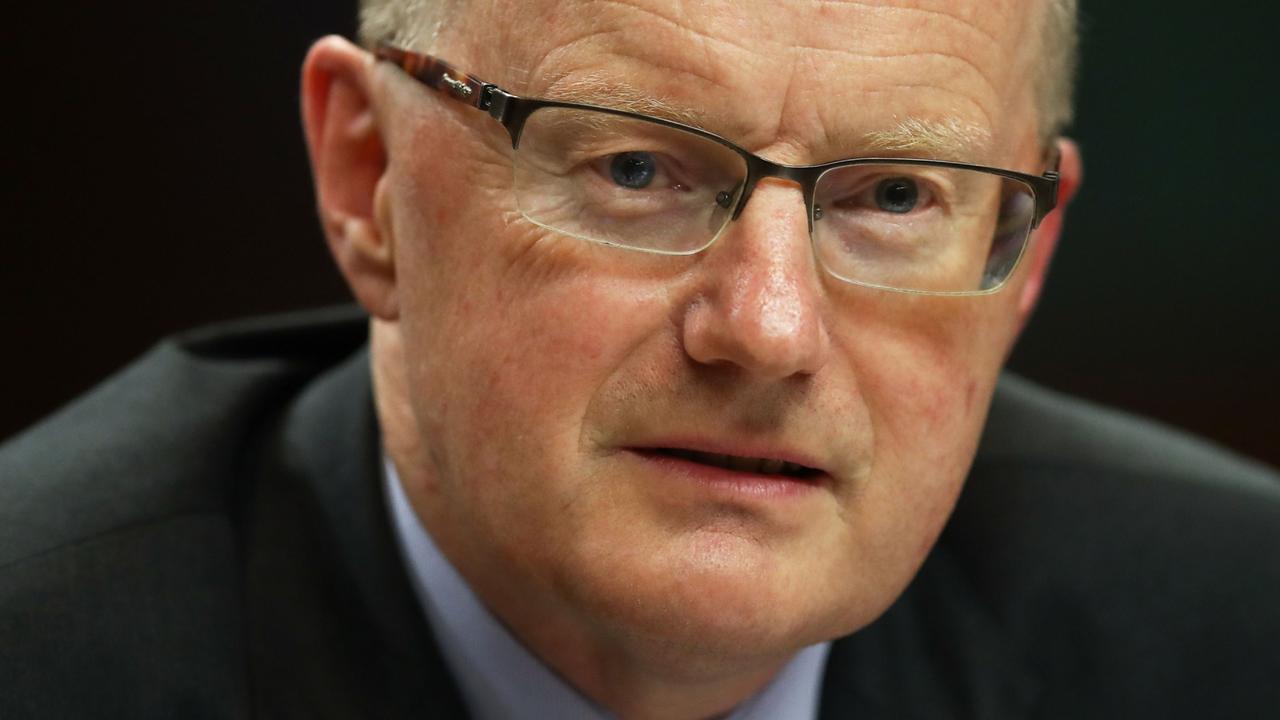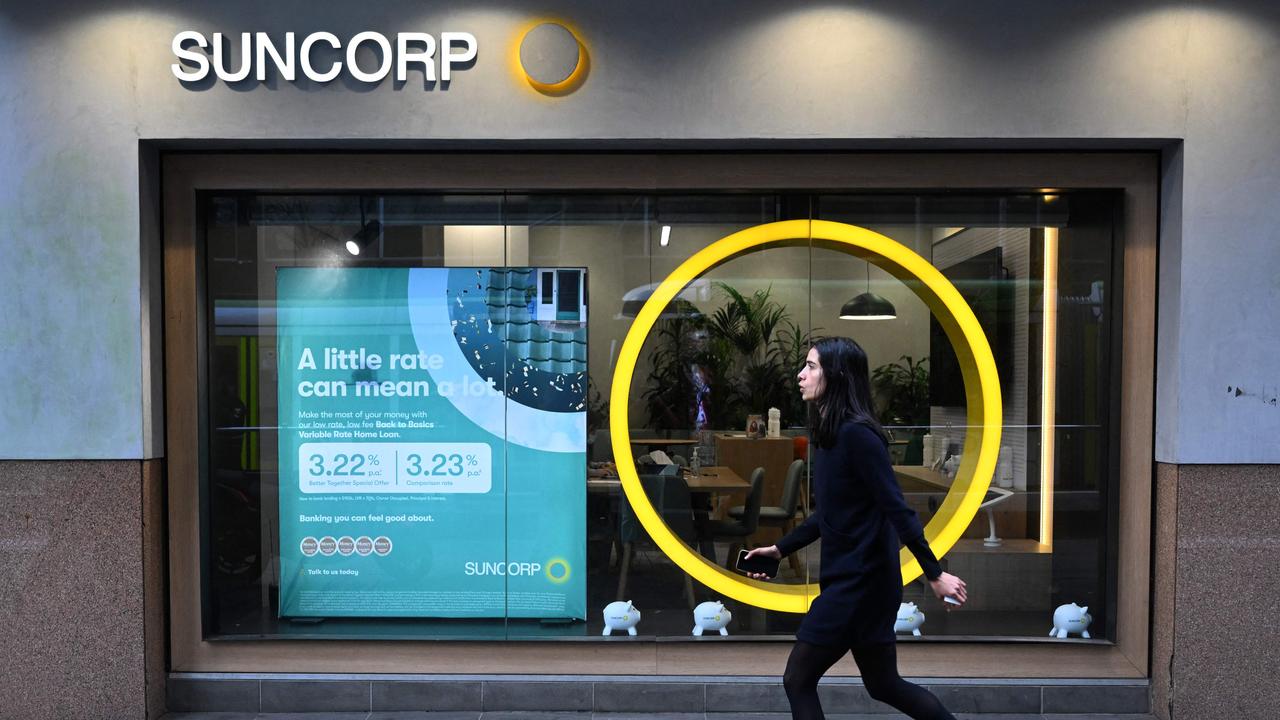Reserve Bank has a firm message in the cash rate pause we had to have
A wages spiral or price gouging from business will be the difference between the rates peak and further pain.

Business
Don't miss out on the headlines from Business. Followed categories will be added to My News.
The good news for Australia is the heavy lifting has been mostly done, with the finishing line in sight for Australia’s post-pandemic wave of interest rate hikes.
In snapping his record 10-hike streak, Reserve Bank governor Philip Lowe has even left the door slightly open for another pause next month – a move that will give further relief to homeowners.
The words “hold” and “assess” are part of the new message coming from Martin Place as it takes a more cautious tone toward the economy.
There could still be just one more tap on the rates pedal to come by the middle of the year, moving the cash rate up from the current level of 3.60 per cent. If a rate rise doesn’t arrive within three to four months, then borrowers may well be in the clear.
But like the weekend Australian Grand Prix in Melbourne, a predicable finish to the rates cycle is not a sure thing.

While inflation looks to have peaked in Australia, the cash rate will have to remain at current levels until the end of the year with the economy still running hot underneath, to make sure higher prices don’t become entrenched.
Its biggest worry now is a wages breakout while employment markets continue to be exceptionally tight. Wages are growing in response and at current rates are consistent with inflation forecasts, although productivity is starting to lag.
A wages spiral, or even gouging by business, will surely put Australia back on the path of rates pain.
Offshore stresses
Still, it would have been an aggressive move from the central bank near the end of its rate hike cycle to push through another 25 basis point increase while there are firm signs inflation is pulling back here and around the world.
And with the US and Europe navigating banking stresses, the turn of events there has undoubtedly forced a reassessment of the outlook for the pace of rate increases globally.
The banking stresses could slow the pace of lending offshore, which is enough to help rein in global inflation, which in turn takes pressure off parts of the inflation mix here.
Importantly Lowe said that there were no signs of contagion, that Australian banks were “strong” and were well placed to provide the credit that the economy needs.
The RBA now joins Canada in sitting out a rate hike this month, while the Reserve Bank of New Zealand – very much a forward indicator of global rate moves – is this week expected to hold or at least signal its own rates peak.
For Australia, inflation is expected to slowly decline this year and next to be back in the target range by mid-2025. However, it’s a bumpy ride down.
Rents are now the new pressure point for the economy with a squeeze on investment housing stock, while soaring energy costs will soon be felt into winter.
Petrol is also on the rise again due to a surprise cut to global oil output on the horizon. These negatives are being offset by easing price inflation across goods, particularly as demand tempers here.
The RBA is balancing many things in trying to cool the economy without crashing it and if Australia gets away with a peak rate of 3.6 per cent to contain inflation, it will be a remarkable achievement.
This represents one of the lowest rate peaks among developed economies.
Suncorp sets for ANZ
ANZ chief Shayne Elliott has less than two months to save his $4.9bn buyout of regional lender Suncorp that, on an initial finding, has little chance to get around the competition regulator.
The Australian Competition and Consumer Commission is again looking to play king maker as it sketches out a way forward: Namely Suncorp sells its bank to Bendigo, or it continues to operate under the status quo of being a bank and insurer.
This will now be ANZ’s challenge – to find a way around this argument.
In setting out its preliminary findings, the ACCC fondly remembers yesterday’s world of banking where there was a branch on every street corner and state markets took precedence over pricing rather than national markets.
It throws out two previous significant findings: Westpac’s acquisition of St George and the forced sale of Bankwest to Commonwealth Bank – a GFC emergency deal the regulator still approved retrospectively.
No one likes branch closures but footfall is fast declining. It also ignores the reality that any branch today, regardless of the bank, is about as far away as a smartphone.
And it’s the global majors from Jack Dorsey’s Block to Apple that are the ones pushing the edge on technology and innovation.
At the same time stresses in the US and Europe show, banking is all about risk and funding, and Australia’s retail banks – no matter how local – need to play a strong hand in global markets to remain competitive.
The preliminary view also dismisses the idea that Suncorp wants to exit banking for the best price possible for its shareholders to pave the way for it to become a more competitive insurer where the market is arguably more concentrated.

The ACCC has formed a preliminary view that a deal with ANZ and Suncorp has the potential to raise competition issues across agribusiness, small and mid-sized banking, home loans and deposits.
National market
Even with banking being a long established national market, it has also invoked concerns over regional market overlap between ANZ and Suncorp Bank in Queensland and northern New South Wales.
On national figures the combination of ANZ sees the fourth biggest bank barely move on market share of loans and deposits, and remaining at fourth behind National Australia Bank.
The ACCC still has a firm belief that regional lenders are the competitive force for the big four of ANZ, CBA, Westpac and NAB.
A driver of competition is the big banks themselves; market share and lending data is watched within a fraction of a point and careers are made or crushed on these moves.
In recent years the biggest force is well-resourced fifth pillar Macquarie Bank that is proving a thorn in the side of all operating from less than a handful of capital city branches. Meanwhile, fast-moving and branchless small to mid-sized business lender Judo Bank has emerged, growing its lending book six times the pace of the broader market in the past year.
Adding to this, in the December quarter mortgage brokers organised seven in 10 of all new home loans written in Australia, showing just how diminished banking networks have become.
Even with the high use of technology in banking markets and the change in the market dynamics, “there remain significant regulatory and structural barriers for new entrants and smaller providers,” the ACCC said. A big part of these barriers are having high hurdles to ensure Australian banks operate safely.
The ACCC concluded in its interim findings that if the proposed deal proceeds, Suncorp Bank “will be removed as an established independent member of the group of second-tier banks” arguing the major banks “may be more likely to face competitive pressure from the second-tier banks”.
The ACCC will seriously consider the counterfactual of a deal between Bendigo and Suncorp, something the regulator believes has “a realistic prospect of occurring”.
Bendigo has indeed made approaches to Suncorp prior to the ANZ sale. Suncorp was cool on this given the prospect of certainty of a transaction occurring and whether in fact it was in the best interest of Suncorp’s customers.
Now the pressure is on ANZ to convince the ACCC to look forward not back.
johnstone@theaustralian.com.au
Originally published as Reserve Bank has a firm message in the cash rate pause we had to have









